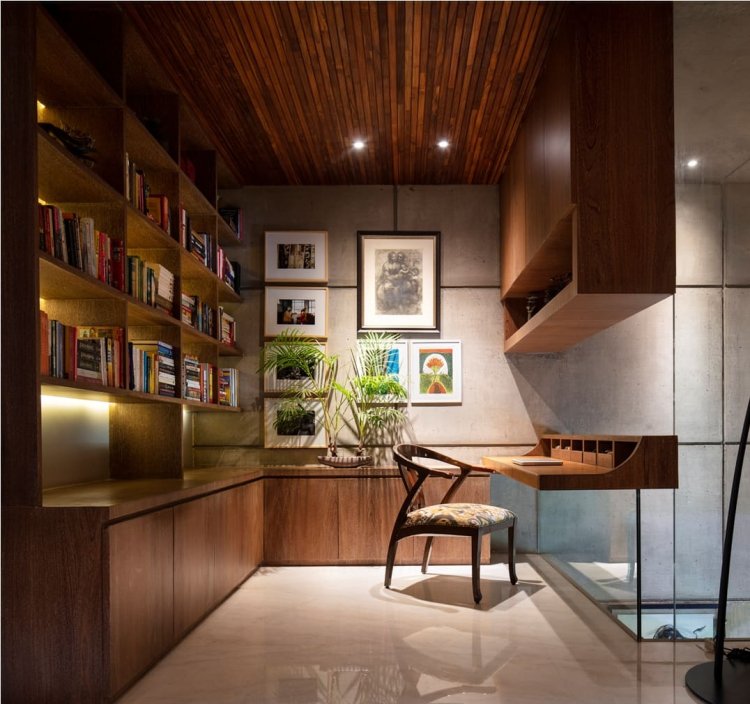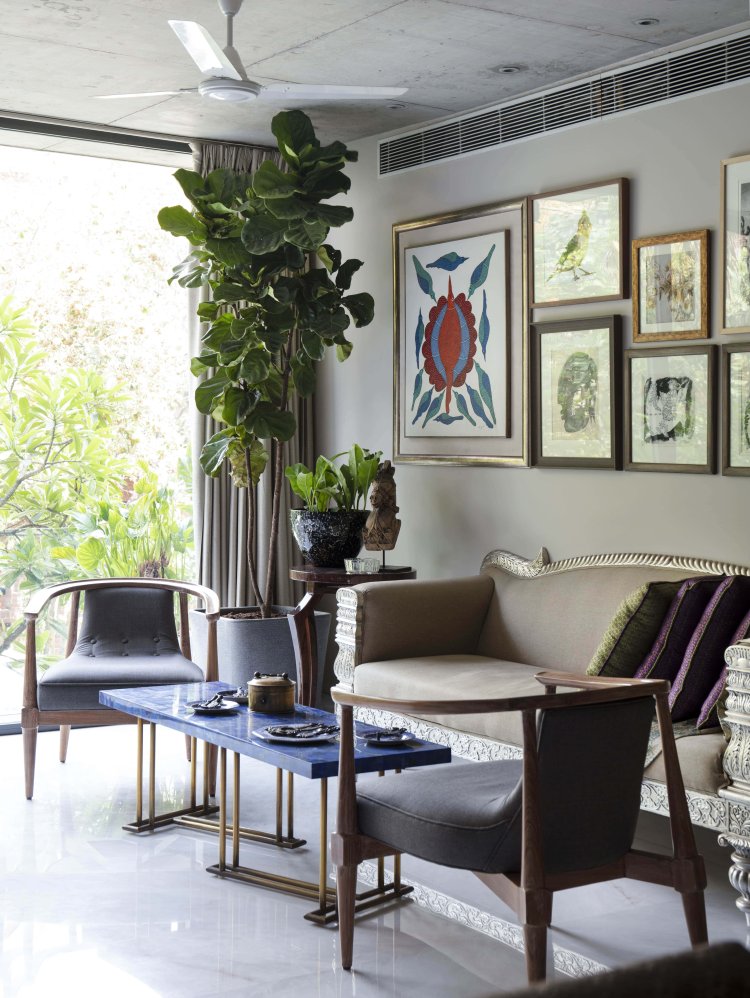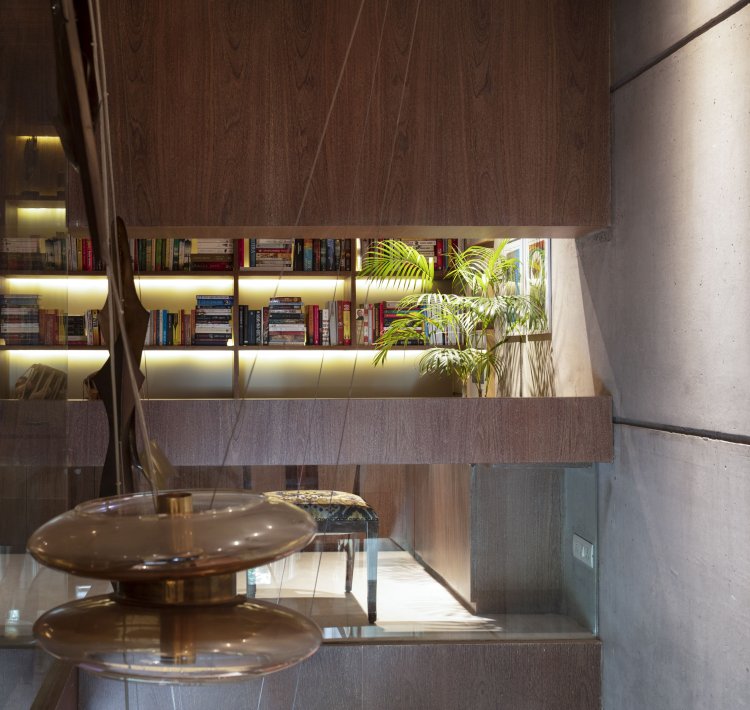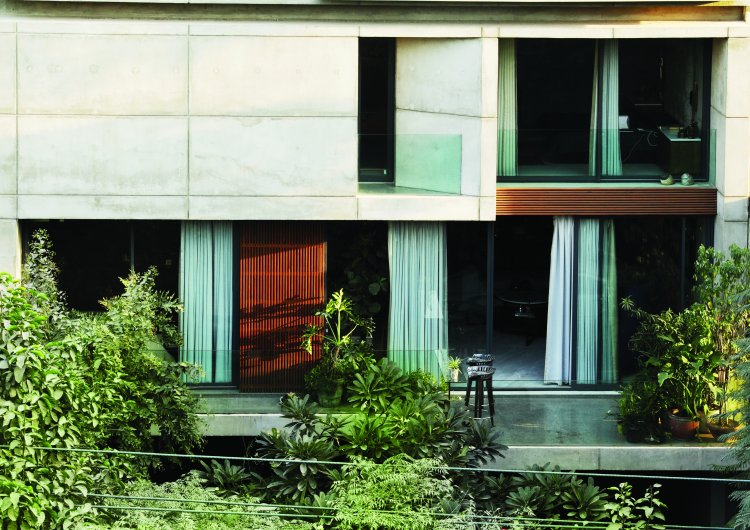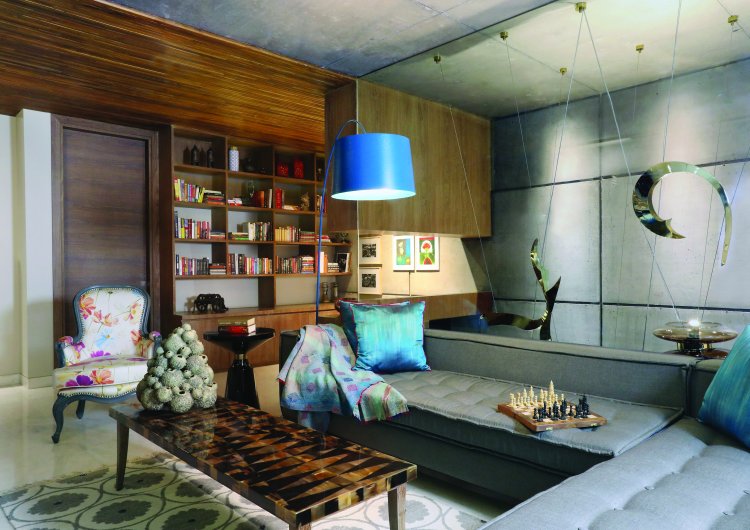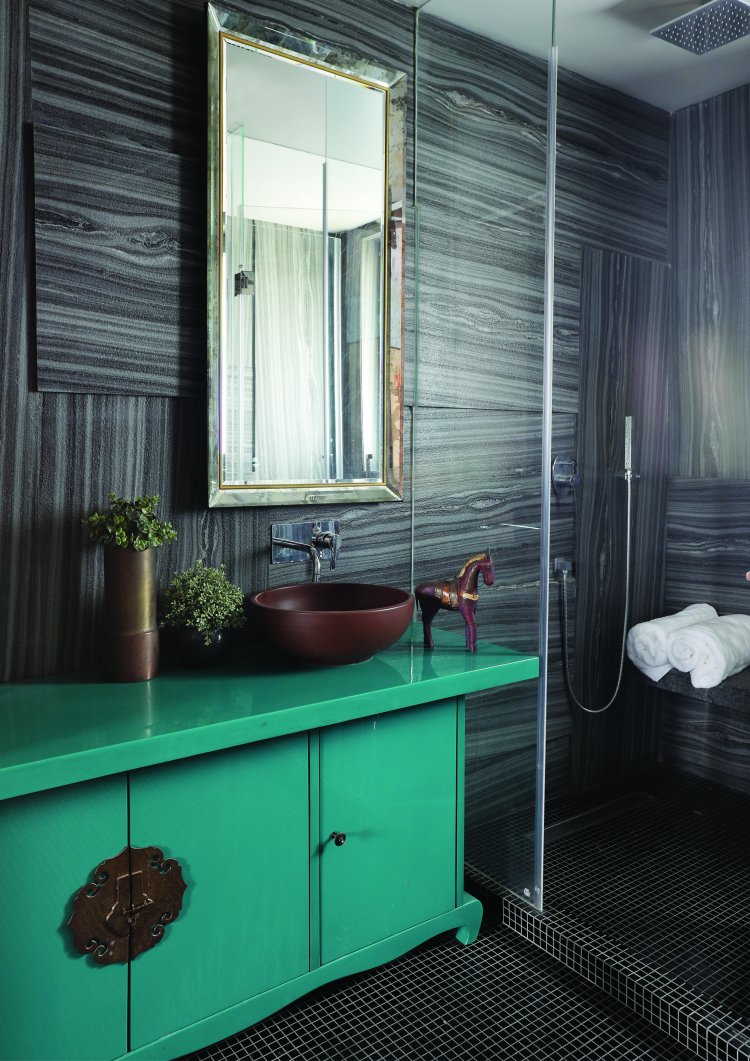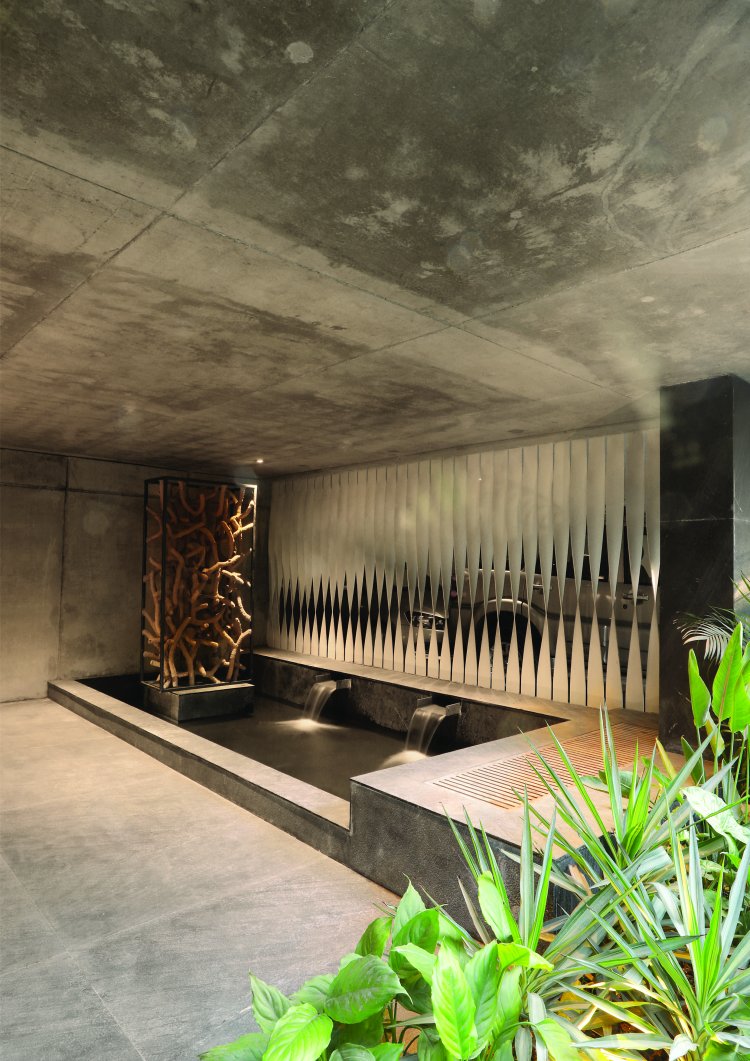The Sanctuary of Memories
The ethos of our practice has always been rooted in being contextual. Celebrating craftsmanship and creating meaningful typology in response to the country that doesn't always need to look westward for inspiration, rather inward and yet present a global viewpoint.
The home owners were hugely inspired by Tadao Ando‘s purist form of architecture, were looking for an innovative and prolific home, allowing us to experiment with techniques and materials that pushed the envelope to a great extent. This eclectic scheme enjoys a generous view of the surrounding green belt. A generous dosage of art and collectables acquired over a period of time also had to be incorporated. The compelling uses of our traditional work as a step towards discovering ourselves as the chief articulator of a design sensibility for an India willing to cultivate new ways of looking at its tradition.
The habitat spread over three floors with space for three generations had to have enough private and public spaces. Entrance cladded in ochre yellow natural clay plaster and grey lime stone floor, boasts of a five feet by fifteen feet “Koi pond” a tiny but lush garden and M.S fins aesthetically placed to cast sensuous shadows . A sculpture by Rahul Gautam titled ‘Regarding Embodiment ‘sits perfectly on the ledge complementing the space in the most organic way.
The façade was a purist interpretation in glass, solid wood slatting and exposed concrete, which was painstakingly executed by a specialized team from Surat, which co habits comfortably with the diverse flooring palette consisting primarily of cast in situ Terrazzo, Honed Granite ,white and black marble, Lime stones, Yamu sand wash and natural clay plaster by traditional craftsmen of Pondicherry.
The complete area is devoid of a false ceiling to incorporate full height doors in Sucupira veneer. Since the ceiling also is an integral exposed concrete feature, every light point had to be meticulously planned to highlight the art and installation. Re-use, recycle being our motto, old wood from the doors and frames of the previous home which was demolished, was entirely utilized in the cantilevered staircase and library ceiling.
Cane weaving in various form and patterns were used extensively, from armchair, bed headboards to wardrobe shutters. Recycled cork was another interesting experiment in the kid’s room, making its aesthetic appeal a perfectly user friendly material.
In nearly every room robust lithographs, print etching, art work and installations by renowned artists have been displayed. National award winners from Crafts Council of India were actively involved in the project contributed towards the Pichhwai installation of a “Viraat Purush” an avtaar of Lord Vishnu to a ’Cycle of life’ by eminent Madhubani artist Shanti Devi. The main door has a Sanjhi installation (a dying craft from Mathura) depicting the ancient symbol of “Hand of Hamsa” the evil eye by internationally famed Sanjhi artist ‘Vijay Kumar Verma’
The guest washbasin made by sculptor Gopal Namjoshi is a unique interpretation in Automobile internal parts, creating a dramatic contrast to the natural clay plaster surrounding the floor and walls.
The Powder room wash basin is a sculpture executed by the in-house team (in brass) draws inspiration and mimics the rough Granite boulders in the adjoining dining area.
All the bespoke furniture and light installation were designed and customized by the in-house Untitled team. The antique Parsi sofa in mahogany wood was scraped of its old polish and given a facelift by using champagne leaf which contrasted with the brilliance of the blue lapis and brass table in front.
Acclaimed artist Narayan Sinha’s “Ganesha on a diet” from antique scraps of bell metal is an imposing and arresting feature of the Vighnanashak in the living room.
Local fabric in all sustainable form i.e silk, cotton, linen, dhurries and natural grass wall papers were chosen over non eco-friendly material. Re-use, recycle being our motto the old wood from the doors and frames of the previous home which was demolished.
The compelling uses of our ancient traditional techniques like exposed concrete, terrazzo, natural clay plaster, inexpensive local limestone in a contemporary cutting edge set up is not only is a step towards green
architecture and sustainability, but a step towards discovering ourselves as the chief articulator of a design sensibility for an India willing to cultivate new ways of looking at its tradition.
Despite the presence of major art and installation and material play, the common thread throughout the home’s liveability through sustainable design. Contemporary spaces while retaining the local flavour have been created.


